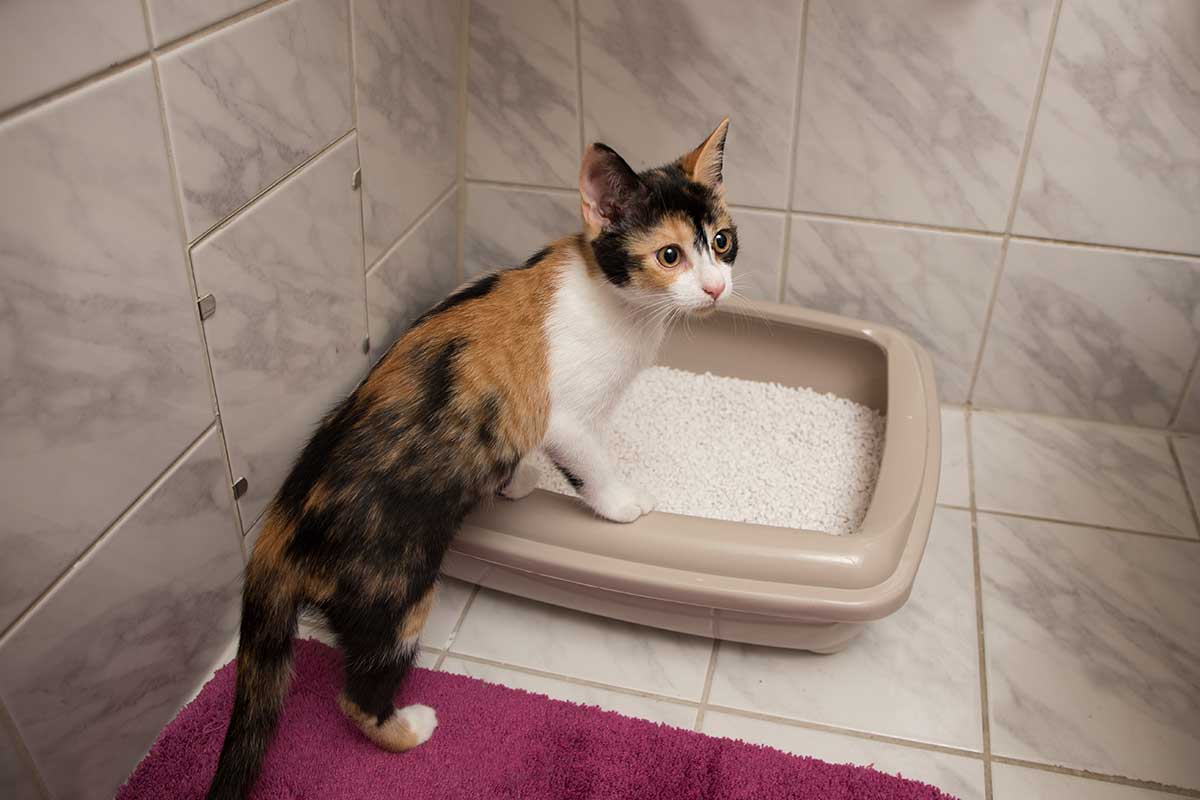When cat litter was invented in 1947, it was made of grains of absorbent clay called Fuller’s earth. There was just one brand, called Kitty Litter, and cat owners had a choice between that or natural sand or sawdust.
Today cat litter is a $2 billion industry in the United Sates. Much of that is still clay litter, but now silica, recycled newspaper, corn, wood, wheat, grass, and nut shells are all processed to make cat litter—clumping and not clumping, scented and unscented.
You may be tempted to buy the litter that appeals most to you; maybe it tracks less or smells good or is inexpensive or is environmentally friendly. But it’s your cat who has to step in it every day, so really, it’s only fair to let her choose. When you use a bathroom that’s uncomfortable or smelly or dirty, it’s always stressful (think about the last time you used a portable toilet at an outdoor event). Using a box full of litter she doesn’t like is just as stressful for your cat.
Litter companies spend a lot of time and money researching what will appeal to cat owners, and formulate their litter accordingly. But what kind of litter do most cats like? Several studies have looked at this question.
Let’s start with scent. A cat’s sense of smell is far better than yours. Cats have from two to forty times as many smell-receptor cells in their nose as you do. That means scents that might seem light and pleasant to you can be overwhelmingly strong to them—especially since they are standing right in the litter. Not surprisingly, then, studies tell us that cats prefer unscented litter. That doesn’t just mean added scents and scented deodorizers; it also applies to scents that might occur naturally in the litter, such as pine. Cats prefer their litter to smell like nothing at all.
That said, if they have the choice between a box that smells like the urine and feces of another cat, or a box full of unscented clumps and lumps, cats prefer the box with no lumps. Researchers tested this by scenting one box with the smell of urine and feces but no actual matter, and putting unscented clumps and gelatin “logs” into another box. The results demonstrate yet another reason why it’s important to scoop your cat’s litter box at least twice a day, even if it doesn’t smell.
If this study is pointing you toward unclumping litter, consider another study that found cats prefer a box with clumping litter. While they are not fond of walking through clumps, what they want is a dry box—no walking on a wet substrate.
What about the litter itself? A variety of studies have found that cats prefer their litter to be soft and fine-grained.
A recent study compared three types of unscented litter—wood pellets, silica microgranules, and nonclumping clay granules. Overwhelmingly, the cats chose silica and clay over the pellets. Then researchers offered the same cats a choice between silica and clay, and the majority chose the clay, especially to defecate.
If you’re considering a new litter, here’s a good way to test whether it will be comfortable enough for your cat to walk on. Pour some litter onto a tray. Then roll up your sleeve and press the inside of your forearm into the litter. If it hurts you, chances are it will be uncomfortable for your cat.
When thinking about these studies, it is important to remember that they tell us what most cats prefer. So, for example, if a majority of cats prefer clay litter, that means a minority prefer something else. Your cat may be in the majority, but she may also be in the minority. How can you find out?
Set up a litter box cafeteria test. In a litter box cafeteria test, you set up several boxes side by side filled with different litters, scoop them all twice a day at the same time, and note which one your cat uses most often. For this test to work, there can be only one variable—the litter. All other factors (location, size of box, frequency of cleaning) have to be the same.
This test is a way to ask your cat exactly what she wants. Because when it comes to litter, your cat should always get to make the choice. After all, she doesn’t tell you how to set up your bathroom.
Beth Adelman, MS, is a cat behavior consultant in New York City. Beth is currently on the executive committee of the feline division of the Pet Professional Guild, and is a frequent speaker on cat behavior.
This article was reviewed/edited by board-certified veterinary behaviorist Dr. Kenneth Martin and/or veterinary technician specialist in behavior Debbie Martin, LVT.








